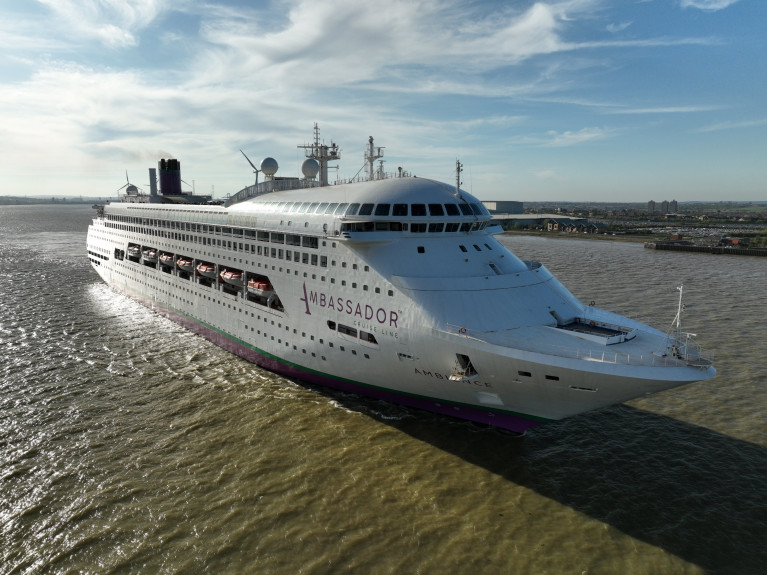Displaying items by tag: New operator
New Ferry Operator Found for Rathlin Island 'Life-Line' Service
Following the announcement to close the Rathlin Island ferry service off Co. Antrim due to "financial difficulty", a new ferry operator has been found to run the route to Ballycastle Harbour.
The final sailing by Rathlin Island Ferry Limited, which ran the route on behalf of the Department of Infrastruture was announced yesterday. This involved an afternoon sailing by the 6 vehicle/140 passenger car-ferry Spirit of Rathlin which departed from the mainland to Church Bay on the island.
The new owner is Dunaverty Limited which will first take over passenger-only ferry crossings from Friday. These 25 minutes crossings will run to a schedule of five return sailings a day.
As for resuming the vehicle ferry service which takes 40 minutes, this will operate once approvals are in put in place.
According to the Department for Infrastructure (DFI) after relevant approvals have been made with the Maritime and Coastguard Agency (MCA), a resumption to a full timetable of scheduled sailings would commence including the Department’s vehicle carrying vessel, the Spirit of Rathlin.
The new contract announced by the DFI to run the service was welcomed by Charles Stewart of Dunaverty Limited who also owns and operates Kintra Tours. “I am delighted to have been awarded the contract to operate the ferry service between Rathlin Island and Ballycastle" and he looked forward to working with the Department of Infrastructure on what he described as a "lifeline service".
BBC News NI has more on the development to reinstate the Rathlin Island ferry route serving the 150 populated island which is four miles long and 2 and half miles mile wide on the east side of the island.
New UK Cruise Operator Completes Maiden Voyage to Germany With Debut Call to Ireland in May
Ambassador Cruise Line, the UK's newest cruise operator whose Ambience has completed a 4-day round trip maiden voyage from its London homeport of Tilbury to Hamburg, Germany, writes Jehan Ashmore.
In advance of Ambience's inaugural cruise that departed the London International Cruise Terminal, Tilbury on Tuesday, the ship’s Godmother, Sally Gunnell, the former British athlete and Olympian named the operator's first cruiseship.
The maiden cruise of the 70,285 tonnes cruiseship however was delayed by a fortnight as the ship when in a Croatian drydock yard for engineering works had delays in the supply of marine gas. The rescheduled London-Hamburg minicruise led to two Norwegian Fjords cruises having to be cancelled.
The 1,400 guest capacity cruiseship built in 1991 had served Princess Cruises as their first Regal Princess and also as the renamed Pacific Dawn.
Ambassador Cruise Line is the first new UK based operator in more than a decade since the formation of Cruise & Maritime Voyages. As Afloat reported in 2020, CMV however went into administration due to the severe impact on the industry caused by the pandemic.
CMV were frequent callers to Belfast, Dublin and Cork with the latter two ports as homeport to Magellen offering direct cruises for Irish cruise-goers.
The former CMV Chief Executive Officer, Christian Verhounig, Afloat has identified continue in the same role for Ambassodor Cruise Line and where he heads the management team based in Purfleet, Essex.
Another former member of the CMV team, Simon Weeks who was their Chief Administrative Officer has taken up a position with Ambassador Cruise Line albeit in the role of Chief Technology Officer.
Likewise of CMV, Purfleet located on the north bank of the Thames estuary is where Ambassador Cruise Line's head office is based. The company is aimed at the UK market offering non-fly cruises and is predominately for the 50-plus traveller.
All cruises will be based out of Tilbury with a curated no-fly programme of 29 inaugural year sailings.
Featured destinations will include the British Isles (and Ireland), the Norwegian Fjords, Greenland, the Arctic and Iceland in additon several short break cruises.
Afloat has examined the cruise schedule, where a 'British Isles Discovery' involves Ambience to make an inaugural call to Belfest Harbour on 7th May and the next day an Irish debut call to Cobh, Cork Harbour.
As for the winter months, there will be a range of exploration style voyages sailing to the Canaries, Cuba, the Caribbean, Cape Verde and Scandinavia.
Ambassador is also to add a second cruise ship, the 48,123 tonnes Ambition in 2023 and sail out of ports such as Belfast, Bristol, Dundee, Liverpool, Newcastle and Falmouth.
The 1,200 guest ship dates to 1999 and in recent years had served as AidaMira for German brand Aida Cruises.
Afloat will have more to report from the German cruise market as another operator from that nation is due to make a call to London this evening and is soon to visit Ireland.
























































